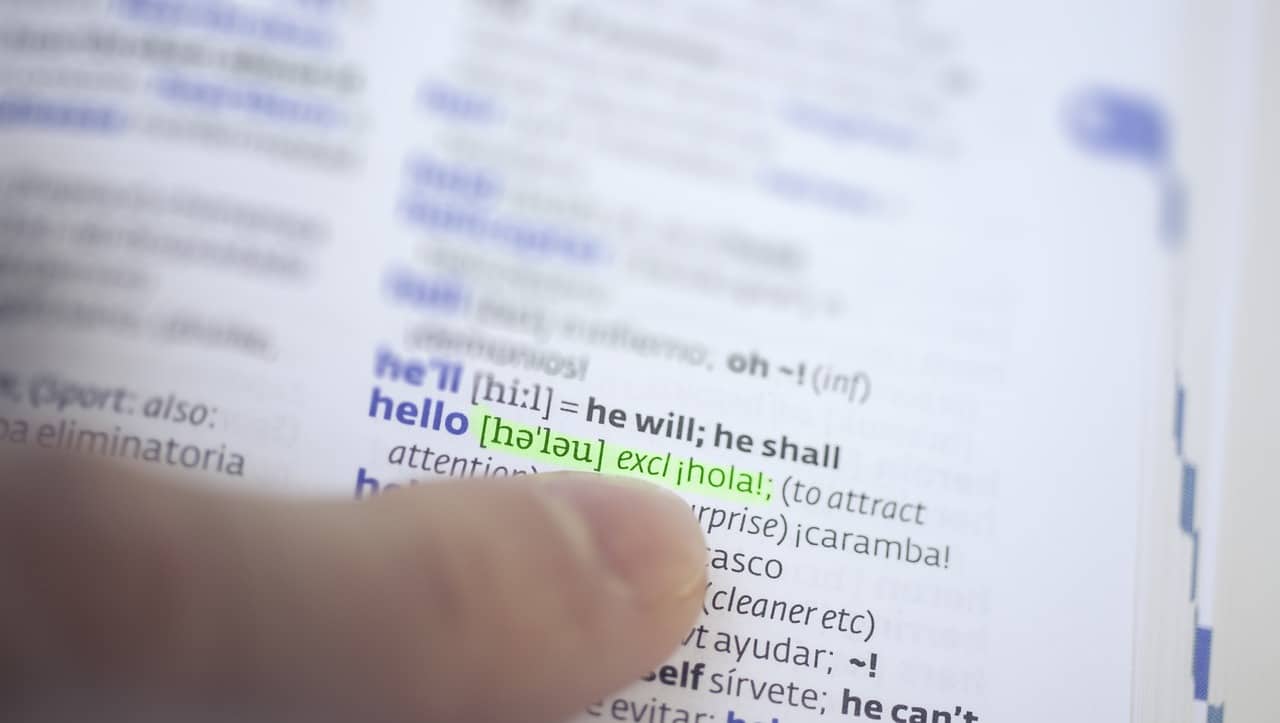Language is the cornerstone of human communication, shaping our understanding and interpretations of the world around us. It is the critical vehicle that drives our social interactions, business transactions, learning experiences, and cultural exchanges. It’s no wonder that language translation services have become a crucial tool for global business and communication. However, the real challenge lies in overcoming language barriers and fostering effective cross-cultural communication. In this context, AI-powered language translation tools come into play as a powerful strategy to bridge this gap.
The Power of Language and Communication
Language and communication are deeply intertwined, playing an integral role in our daily lives. Language is the tool we use to express our thoughts, feelings, and ideas, while communication brings out the shared understanding of these expressions. Language is not just about words and grammar; it encompasses cultural contexts, nuances, emotions and tones which make human communication complex and rich.
A voir aussi : Unlock the potential of small spaces with gray tiles
In today’s globalized world, effective communication is essential not only for personal relationships but also for business transactions, educational learning, international diplomacy, and cultural exchange. It is the key to understanding and respecting cultural diversity, fostering cooperation and harmony among different cultures.
However, communication across different languages and cultures can be a challenge. Language barriers can lead to miscommunication, misunderstandings, and even conflicts. This is where language translation becomes essential in breaking down these barriers and fostering effective cross-cultural communication.
Dans le meme genre : 3 reasons to wear a heart-shaped necklace
Impact of Technology on Language Translation
Technology has drastically transformed the landscape of language translation over time. A few decades ago, translation was a time-consuming process requiring human translators who were well-versed in both the source and target languages. The advent of technology, however, has changed the game.
Today, we have access to a wide array of translation tools, from simple online dictionaries to advanced language translation software. These tools not only help translate words and sentences from one language to another but also aid in understanding the cultural context and nuances of the language.
AI-powered language translation tools are the pinnacle of this technological evolution. These tools leverage artificial intelligence and machine learning to provide accurate and contextually appropriate translations in real time. They go beyond literal translations to understand and mimic the nuances, idioms, and cultural references of the language, bringing us closer to seamless cross-cultural communication.
AI-powered Language Translation: A Game Changer
AI-powered language translation has revolutionized the way we communicate across different languages and cultures. From real-time translation of spoken words to instant translation of web content, these tools are continually breaking down language barriers, enabling seamless communication and fostering cross-cultural understanding and cooperation. They are increasingly becoming the standard tool for businesses, educators, and individuals worldwide.
One of the significant advantages of AI-powered translations is their ability to process and translate large volumes of data in real time. This capability is especially beneficial for businesses operating in the global market, allowing for swift, smooth, and effective communication across different languages and cultures.
Another critical aspect of AI-powered translations is their continuous learning and improvement. These tools use machine learning algorithms to learn from their mistakes and improve their translation accuracy over time, thus providing more contextually appropriate and culturally sensitive translations.
Bridging Cultural Gaps: The Role of AI
While AI-powered translation tools are efficient in breaking down language barriers, their true power lies in fostering cross-cultural understanding and cooperation. Language is deeply embedded in culture, and a literal translation often fails to convey the cultural nuances and contexts. AI-powered translations, however, are designed to understand and mimic these cultural nuances, thus providing more accurate and culturally sensitive translations.
These tools use advanced algorithms and large datasets to understand the cultural contexts, idioms, and references of the target language. They can adapt the translation according to the cultural context, ensuring that the message is not only accurately translated but also culturally appropriate.
In essence, AI-powered language translation tools are not just translating words; they are translating cultures. They are enabling us to understand and appreciate the cultural diversity that makes our world so fascinating and vibrant. They are fostering cross-cultural understanding and cooperation by breaking down language and cultural barriers and bringing us closer together in our global village.
The Future of AI-powered Language Translation
The future of AI-powered language translation looks promising. With advancements in technology and machine learning, these tools are continually improving their accuracy and cultural sensitivity. They are becoming more intuitive and user-friendly, making them accessible to a broader audience.
In the business sphere, AI-powered translations are expected to become an integral part of global business communication, aiding in swift and efficient cross-cultural communication. In the educational field, these tools can facilitate multicultural learning experiences, fostering global understanding and cooperation among students. In the social domain, AI-powered translations can help in promoting cultural exchange and harmony among different cultures.
While AI-powered language translation is not without its challenges, its potential to foster cross-cultural understanding and cooperation is undeniable. As these tools continue to evolve and improve, they will play an increasingly critical role in our globalized world, breaking down barriers, fostering understanding, and bringing us closer together.
Utilization of AI in Language Learning and Education
The utilization of AI-powered language translation tools in language learning and education is an exciting development. These tools not only assist in breaking down language barriers but also aid in providing a richer, more nuanced understanding of various cultures. In a world where cross-cultural communication is increasingly important, these tools are invaluable in facilitating effective communication and promoting cultural sensitivity.
Language learning is not merely about acquiring vocabulary or mastering grammar; it’s also about understanding cultural nuances that often shape meanings. Traditional language learning methods often struggle to provide this cultural context effectively. However, AI-powered translation technology is designed to understand and mimic these cultural nuances, providing students with a more comprehensive understanding of the language.
AI-powered language translation tools can provide real-time translations, making them extremely useful for educators and students alike. These tools can translate not just text, but also audio and video content, thus facilitating a multisensory language learning experience. They also offer the possibility of personalized learning, where the tool adapts to the learner’s pace and level of understanding.
Moreover, these tools use machine learning to continuously improve their translations. They learn from their mistakes, adapting and refining their algorithms to provide more accurate translations over time. This feature, combined with their ability to provide culturally sensitive translations, makes them a powerful tool for language learning and education.
Enhancing Cross-Cultural Understanding through AI-powered Translation
Artificial intelligence has significantly contributed to cross-cultural understanding by breaking down language and cultural barriers. It has done so by providing more than just a literal translation of words. AI-powered translation tools are equipped to understand and mimic the cultural nuances embedded in languages. They are revolutionizing the way businesses, educational institutions, and individuals communicate on a global scale.
AI-powered language translation tools contribute to global communication by allowing for a more profound understanding of different cultures. They help in bridging the gap between different cultures by providing translations that are not only linguistically accurate but also culturally sensitive. They facilitate effective communication by ensuring that the translated message retains the cultural nuances and contexts of the source language.
These tools also allow for real-time communication across different languages. This feature is particularly useful in business communication, where time is often of the essence. Businesses can communicate with their global partners effectively, without worrying about misunderstandings due to language barriers.
Moreover, as these tools learn and improve over time, they are likely to become even more accurate and culturally sensitive. This continuous learning and improvement signify that AI-powered translation tools are not just a temporary solution but a long-term strategy for fostering cross-cultural understanding and cooperation.
Conclusion: Future Implications of AI-powered Translation
The power of AI-powered language translation is indisputable. Its potential to revolutionize language learning and education, global business communication, and cross-cultural understanding is immense. As these tools continue to evolve and improve, they are likely to play an even more significant role in our globalized world.
The future of AI-powered language translation lies in its ability to provide increasingly accurate and culturally sensitive translations. With advancements in machine learning and artificial intelligence, these tools are expected to become more intuitive and user-friendly. They are also likely to become more integrated into our daily lives, facilitating seamless communication across different languages and cultures.
However, it’s important not to overlook the challenges that come with AI-powered translation. Issues like data privacy, algorithm bias, and the potential loss of human translators’ jobs are still significant concerns. Therefore, while celebrating the power of AI-powered language translation, it’s also crucial to address these challenges proactively.
In conclusion, AI-powered language translation is a powerful tool that has the potential to foster cross-cultural understanding and cooperation. It’s a game-changer in the realm of global communication, breaking down barriers and bringing us closer together in our global village. As we look forward to a future where AI powers our communication, we must also work towards ensuring that this technology is used responsibly and ethically.











